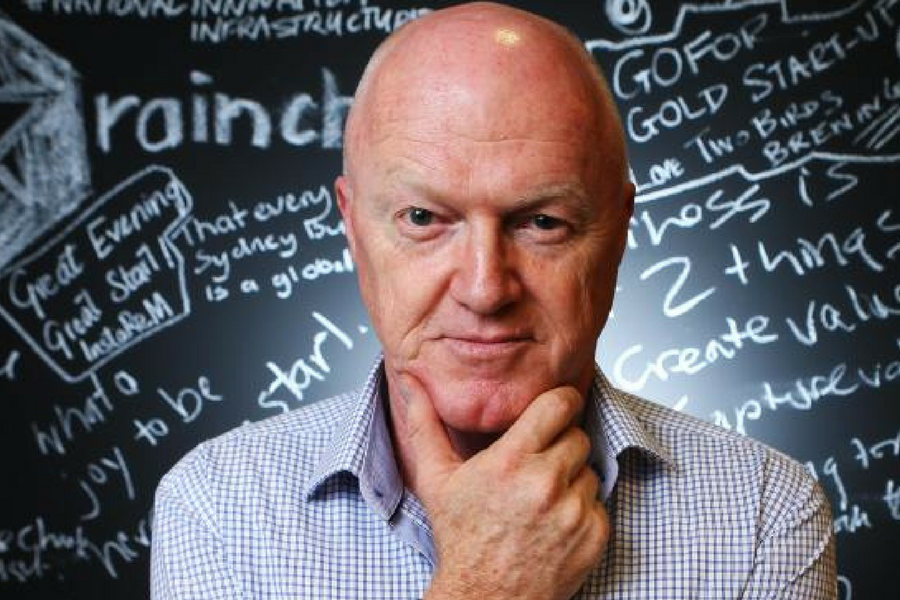Once worn simply for the purpose of telling time, wearables such as watches have transformed into something of a fashion statement over the last couple of years. Between the popularity of Fitbits, Apple Watch’s and Samsung Gears, the global wearable market has grown from just above US$1 (AU$1.35) billion in 2013 to US$2.9 (AU$3.9) billion last year, nearly tripling over the span of three years.
Aside from tracking heart rate, telling time, counting steps, streaming text messages and so on, apparently wearables help increase work productivity and job satisfaction too; at least according to a study conducted by the University of London (next stop, wearables pick you up dates on Tinder based the number of steps you’ve taken).
It seems there are no limits to what wearables devices can do, as the technology transitions into acting as a functioning debit card, with Queensland-based Heritage Bank having recently partnered with Visa to trial a branded payment wearable.
Enter the ‘Curl’, a wearable payments accessory developed by Sydney-based startup Inamo. Similar to Heritage Bank’s recent payment wearable, the Curl device connects to a customer’s transaction account and allows them to purchase items using Paywave. Like modern debit cards, the Curl’s paywave transactions are capped at a $100 dollar limit, before requiring a pin to be entered.
Rather than replace existing wearables, however, Inamo looks to hop aboard the wearable-frenzy bandwagon, by making the Curl an attachable accessory for existing wearable devices. A tiny, slip-on waterproof attachment, the device is able to attach to classic watch and fitness bands as well as keyrings.
The startup has also developed the WaveShades, a pair of sunglasses with an in-built chip on the inside that allows for paywave transactions. The WaveShades are currently in the prototype stage, while the Curl launched earlier this year, available for customers to purchase online.
Inamo founder, Peter Colbert, explained that Heritage is the startup’s banking partner for the technology, with all money loading onto the account stored and overseen by the bank’s Authorised Deposit-taking Institution (ADI).
“All a consumer needs to do is transfer funds from their regular account to their Inamo Curl account. It’s our intention in 2018 to offer consumers the ability to link their Inamo Curl directly to their normal spending account,” he said.
With experience in the finance and travel industry, Colbert previously helped conceptualise the launch of the Visa Prepaid Travel Card, a move which provided him with a “taste” of working with financial and card services. The founder launched prepaid card startup The Card Group in 2012, before conceiving the idea for the Inamo a few years later.
“I went surfing in Manly and afterwards I caught up with friends, but when it came time for me to shout the coffees I had forgotten my wallet. While I had the idea for the Curl, it’s that experience that’s given me the foundation and knowledge needed to make a go of it.” he said.
Heritage Bank soon referred the startup to Visa, who Colbert said was looking for a company that had developed a robust payments device. The payments platform is now partnered with Visa, which serves as the payments processor for both the Curl and the WaveShades.
The Curl is valued at $19.95, giving consumers unlimited transactions and deposits into their account, while charging them a small percentage each time they use the device for a payment.
The device comes in a small rubber case with two flexible on each side, with the Visa prepaid chip stored inside. The Curl can then be tapped over an Eftpos machine with Paywave, just like an average debit card. Colbert said the WaveShade design was later based off the Curl, as he discussed what the development process for the sunglass device was like.
“This was a bit of fun for all concerned, with the aim of demonstrating what’s possible in wearable tech. We provided the payment platform and Local Supply did the design,” he said.
“Personally, I see them being used for those consumers who go to the beach or like our CTO James who rides a motorbike, he hasn’t taken them off.”
The startup received $1 million in funding from early stage investment club Investible, led by the group’s Director of Investments, Hugh Bickerstaff.
“Every one of our investments comes back to the quality of the founder. With respect to Inamo, we saw Peter’s energy, passion and commitment to get things done. Additionally, he’s connected into and understands the community of active people that will be attracted to the Curl,” said Bickerstaff, speaking about the announcement last week.
“There’s also significant opportunity for Inamo in the US market, which doesn’t yet have contactless payments, and we’re excited to see how the business progresses.”
Colbert said he’s confident that that the Curl will be able to find its place in the market, as it tends to the issue of consumers having to purchase multiple wearable devices for different purposes.
“I just felt consumers shouldn’t be shackled to one branded wearable device. For Inamo to be successful, we had to be agnostic and offer consumers the ability to attach it to a multitude of wearable devices, depending on what suits their lifestyle,” he said.
Image: Peter Colbert. Source. Supplied.




















Trending
Daily startup news and insights, delivered to your inbox.